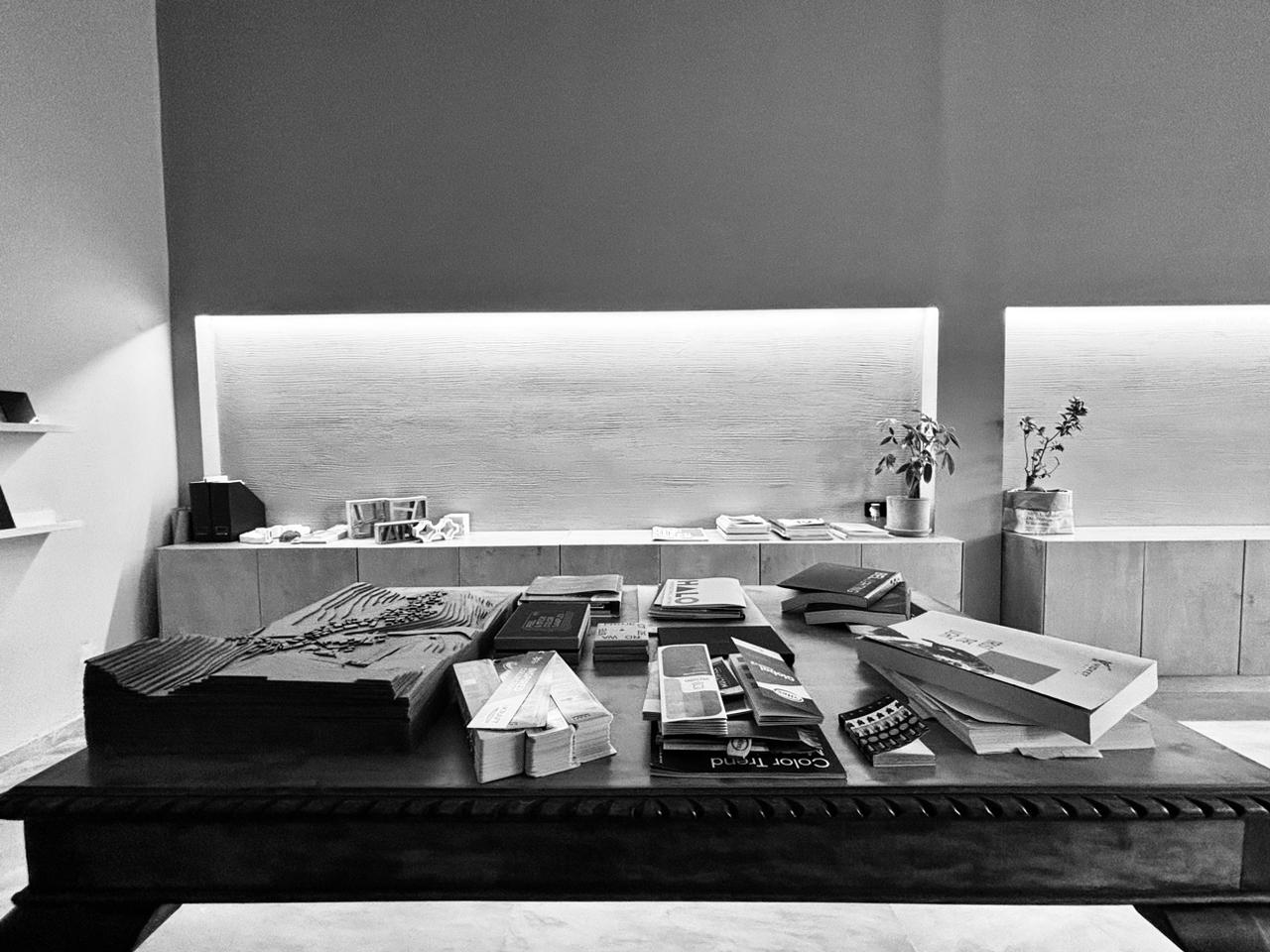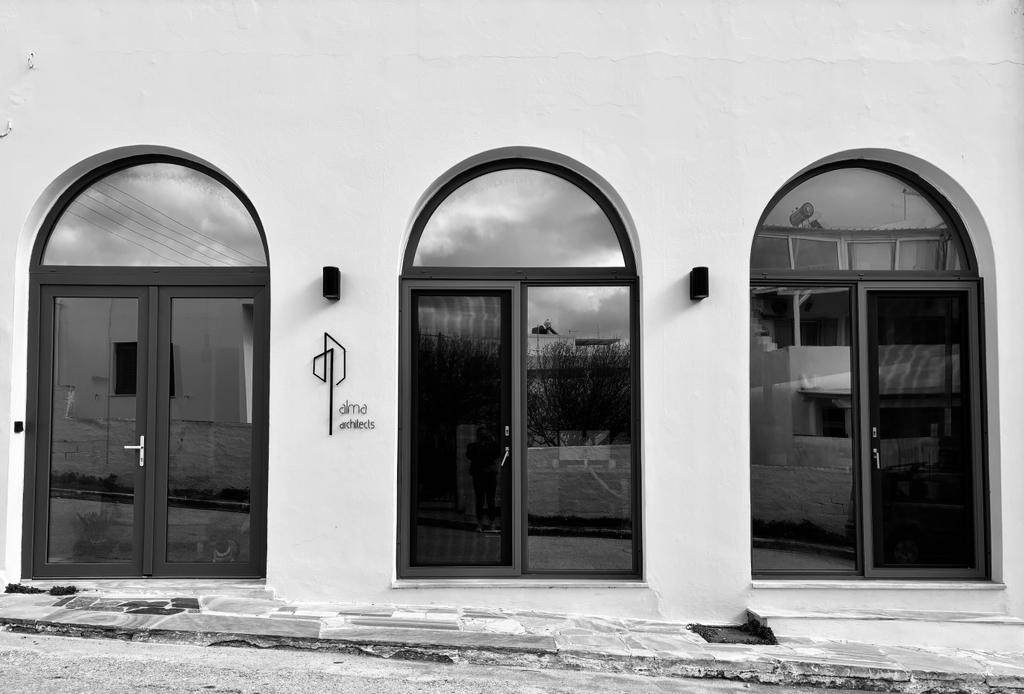The study concerns the design of a complex of three residences within the traditional settlement of Arnados, in the Municipality of Tinos.
The main factors were to make the best possible use of the southern sunlight and the view, protection from the northern winds and at the same time integration into the topography of the area and the architectural settlement environment.
At the same time, the aim is for each of them to operate independently, ensuring their privacy, but the combination of the three to form a single whole and reflect the sense of belonging to it. We have therefore chosen to design the houses on either side of two imaginary axes, which in fact represent the main axes of movement to and from them. These axes separate the volumes from each other but at the same time unify them at their intersection. The above intersection point acts as a focal point for the residents to meet and socialize and is the gathering point for all the collective activities of the complex (communal bosom and ancillary spaces). Finally, in order to integrate the building into the topography, a scaling of the volumes is sought, starting from the street level and following the slope of the ground.
More specifically, the project concerns the design of three detached houses, one two-storey and two ground floors with basement. The placement of the houses on the plot was made with a view to the best possible integration into the traditional settlement, without harming the adjacent properties and respecting the scale of the site as follows: The two-storey dwelling is placed in the north-western part of the plot, at the junction of the country road and the municipal road - path, which is adjacent to the western boundary of the property. Through the above design proposal and not covering the entire northern boundary of the plot with a building, it is sought to protect, to the maximum extent possible, the view of the building located upstream of the road. At the same time, a second volume - an architectural projection - is created in this building, with reference to the geometric openings found in the dovecotes of Tinos. With respect to the above traditional architecture, an attempt is made to borrow these characteristics in order to highlight them through modern design and appropriate lighting. Each of the remaining two houses consists of two levels, ground floor and basement.
The design of the openings was made with a view to the best connection between the interiors and the open-air - courtyards and the framing of the particular characteristics and views towards the surrounding area: the view towards the surrounding settlements , the sea and the dovecote to the west of the house. Finally, to improve the quality of ventilation and lighting of the underground spaces, the skylights on the respective basement facades contribute to the improvement of the ventilation and lighting quality, as well as the creation of a skylight space in the residential areas with the basements
The materials chosen are natural and rough, which maintain a simplicity but at the same time enhance the dynamics of the design and emphasize its geometry. Stone is used in the main axis of the composition, with main reference to the material of the site. At the same time, this material is chosen to clad some of the volumes of the houses, in order to emphasize their cubic character and highlight the individual elements that are in dialogue with them. More specifically, the volume on the street is clad in stone, so that the element of architectural projection, with reference to the openings of the dovecotes, develops a dialogue between the stone and the colored plaster of which it is made. Finally, the western volume of the western dwelling of the complex is also clad in masonry, in order to highlight its pure cubic character, a geometry prevalent in the archetypal buildings of the island (cells - farmhouses). Continuing and with the use of local materials in mind, grey marble is used in the presses and aprons of the openings (doors and windows), which remain external and visible in order to be imprinted on the facades of the project. Finally, the pergolas in the courtyards of the houses will be made of wood. All the above colour tones and external geometric features are drawn from the palette offered by the natural and residential environment of Tinos.




